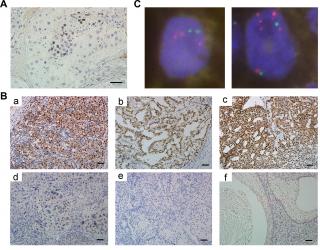Dec, 2022

A genetic hallmark of malignant germ cell tumours (GCTs) is isochromosome 12p, but oncogenes located in 12p that are specifically expressed in GCT have not yet been identified. SIN3-HDAC complex-associated factor (SINHCAF) is a subunit of the Sin3/histone deacetylase (HDAC) complex, and it defines a Sin3a-Hdac complex variant that is required for the self-renewal of mouse embryonic stem cells. This study demonstrated that SINHCAF is expressed in a vast majority of malignant GCTs and is rarely expressed in somatic malignancy. Fluorescence in situ hybridisation revealed SINHCAF amplification in malignant GCTs. SINHCAF silencing using shRNA reduced anchorage-dependent cell proliferation and tumoursphere formation and inhibited tumour cell migration and invasion in GCT cell lines. Moreover, in the GCT cell line NTERA2/D1, SINHCAF silencing inhibited the expression of genes associated with embryonic stem cells and induced the expression of genes associated with neuronal and white fat cell differentiation. Compared with somatic cell lines, GCT cell lines were more susceptible to HDAC inhibitor treatment. Thus, we identified SINHCAF to be a potential oncogene located in the amplicon of chromosome 12p and showed that SINHCAF was specifically expressed in malignant GCTs. HDAC inhibitor treatment may counteract the oncogenic activity of SINHCAF and is a promising therapeutic approach for GCTs. © 2022 The Pathological Society of Great Britain and Ireland.